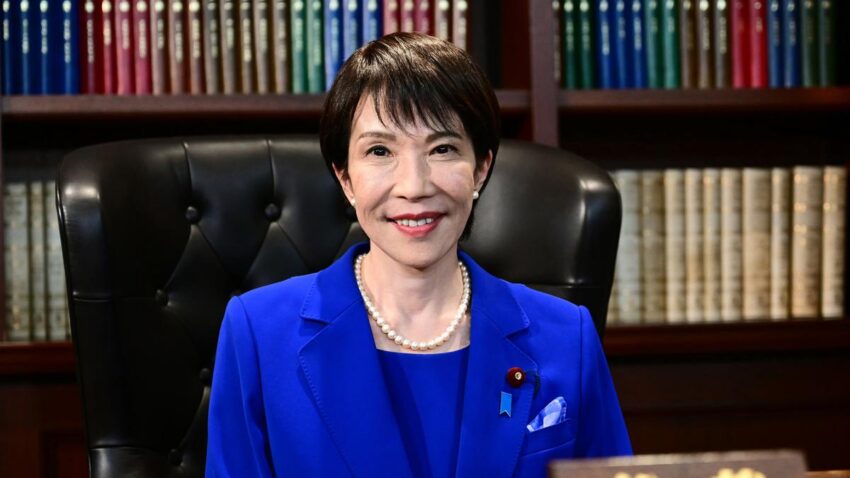In a country that ranks poorly internationally for gender equality, the new president of Japan’s long-governing Liberal Democratic Party (LDP), and likely next Prime Minister, is an ultra-conservative star of a male-dominated party that critics say stands as an obstacle to women’s advancement.
Sanae Takaichi, 64, admires former British Prime Minister Margaret Thatcher and is a proponent of former Prime Minister Shinzo Abe’s conservative vision for Japan. Ms. Takaichi is the first female president of Japan’s predominantly male ruling party, which has dominated the country’s post-war politics almost without interruption.
During her campaign, she hardly touched on gender issues. However, on Saturday, October 4, 2025, as she took the party president’s chair and posed for the customary photo as the newly elected leader, Ms. Takaichi remarked, “Now that the LDP has its first female president, its scenery will change a little.”
### Experienced Politician with Conservative Views
First elected to parliament from her hometown of Nara in 1993, Takaichi has served in key party and government positions, including minister of economic security, internal affairs, and gender equality. However, female lawmakers in the conservative LDP who were given limited ministerial roles have often been shunned when speaking out about diversity and gender equality.
Ms. Takaichi has maintained old-fashioned views favored by male party heavyweights. Admitting she is a workaholic, she prefers studying at home rather than socializing. After two unsuccessful runs for party presidency, she made efforts to be more sociable and build connections, following advice she received.
### Calls for Hard Work Over Work-Life Balance
On October 4, as she called for an all-out effort to rebuild the party and regain public support, Ms. Takaichi urged all party lawmakers to “work like a horse.” She added, “I will abandon the word work-life balance. I will work, work, work and work.”
Her rejection of the work-life balance phrase quickly trended on social media, triggering mixed reactions—some praised her enthusiasm, while others expressed concern about her demanding work ethic.
### Gender Equality in Japan Remains Limited
Women comprise only about 15% of Japan’s lower house, the more powerful chamber of the two parliamentary houses. Additionally, only two of Japan’s 47 prefectural governors are women, highlighting the ongoing challenges women face in political leadership roles.
### A Diverse Background with Conservative Policies
As a student, Ms. Takaichi was a drummer in a heavy-metal band and a motorbike rider. She has advocated for a stronger military, increased fiscal spending to promote economic growth, promotion of nuclear fusion, enhanced cybersecurity measures, and stricter immigration policies.
While she has vowed to drastically increase the number of female ministers in her government, experts warn she might inadvertently set back women’s advancement. As party leader, showing loyalty to influential male figures is critical; failure to do so could lead to a short-lived tenure.
### Focus on Women’s Health and Traditional Roles
Ms. Takaichi has supported financial assistance for women’s health and fertility treatments as part of the LDP’s policy encouraging women to serve in traditional roles as good mothers and wives. Recently, she opened up about her struggles with menopausal symptoms and emphasized the importance of educating men about female health to create more supportive environments at school and work.
### Conservative Social Stances
She supports the imperial family’s male-only succession and opposes same-sex marriage. She also stands against revisions to the 19th-century civil law that would allow married couples to retain separate surnames, fearing societal pressure on women to abandon theirs.
### Controversial Historical and Foreign Policy Views
Ms. Takaichi is known as a wartime history revisionist and a China hawk. She regularly visits the Yasukuni Shrine, which Japan’s neighbors view as a symbol of militarism, though she has declined to elaborate on her plans as prime minister. Political watchers caution that her revisionist stance on Japan’s wartime history could further complicate diplomatic relations with Beijing and Seoul.
Her hawkish views also raise concerns about the LDP’s longstanding partnership with Komeito, a Buddhist-backed moderate party. While she acknowledges the importance of the current coalition, she is open to collaborating with far-right groups.
—
Sanae Takaichi’s leadership marks a historic moment as the first female head of Japan’s ruling party. However, her ultra-conservative positions and traditional views on gender roles suggest complex challenges ahead for those hoping to see significant progress in gender equality and social reforms under her tenure.
https://www.thehindu.com/news/international/japans-first-female-governing-party-leader-sanae-takaichi-is-an-ultra-conservative-star-in-a-male-dominated-group/article70127215.ece
